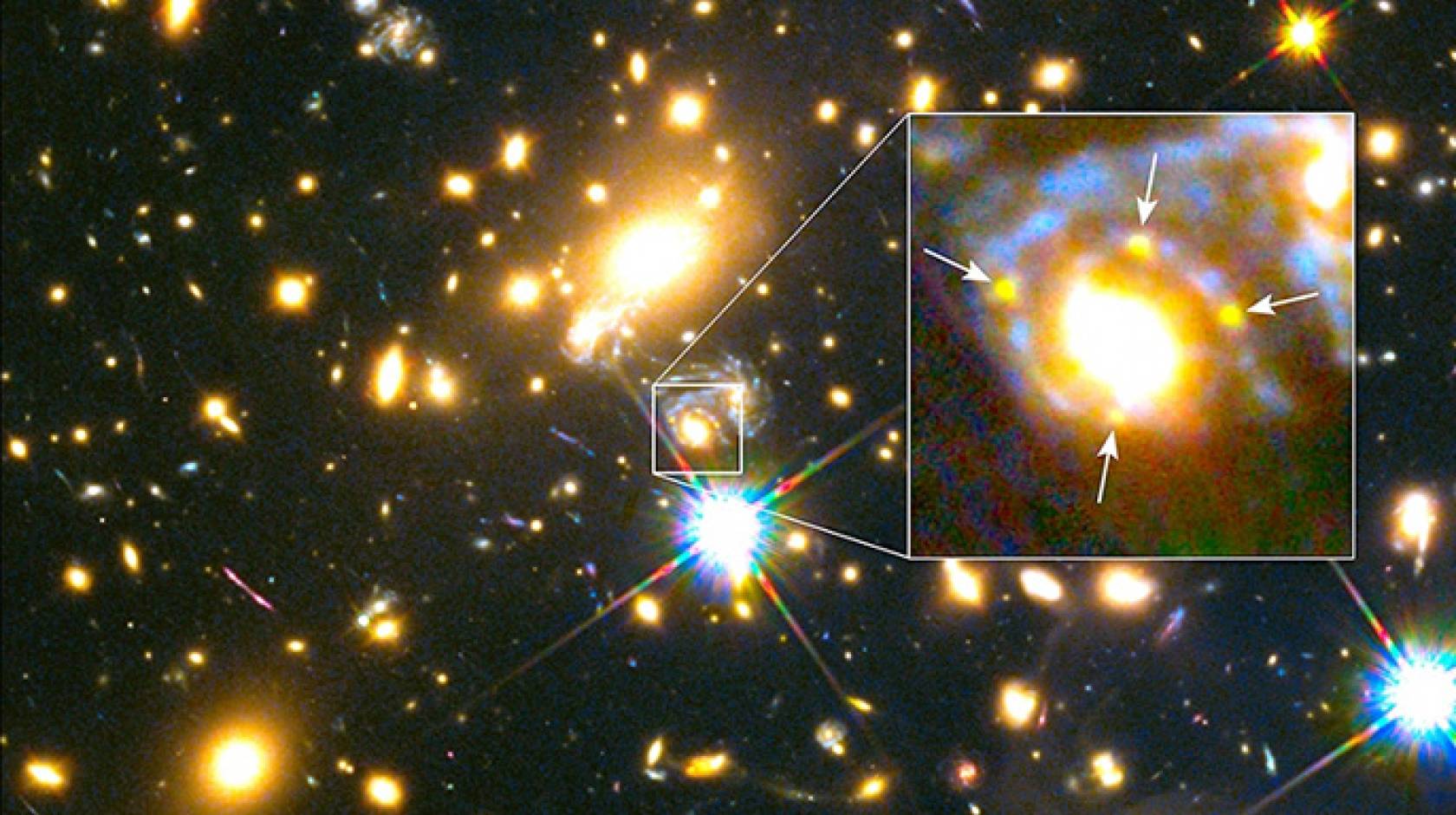March 5, 2015
UCLA, UC Berkeley, UC Santa Barbara
UCLA, UC Berkeley, UC Santa Barbara

The image shows the galaxy’s location within a hefty cluster of galaxies, located more than 5 billion light-years away. In the enlarged inset, the arrows point to the multiple copies of the exploding star — dubbed Supernova Refsdal — in a formation called an Einstein Cross.
Credit: NASA, ESA, FrontierSN and GLASS
Using multiple images that reached the Earth at different times, astronomers including researchers from UCLA, UC Berkeley and UC Santa Barbara have reported the first discovery of a distant star exploding into a supernova. A supernova, the end stage of life for very massive stars, can briefly outshine an entire galaxy and radiate as much energy as our sun emits in its entire lifespan.
The research is published in a special issue of the journal Science celebrating the centennial of Albert Einstein’s Theory of General Relativity.
In pictures transmitted by NASA’s Hubble Space Telescope, the astronomers spotted four images of a supernova arranged in the shape of a cross, known as an “Einstein’s Cross.” The shape was created by the powerful gravity of a foreground galaxy embedded in a massive cluster of galaxies.
More details:
- UCLA: Astronomers report first discovery of a distant star exploding into a supernova
- UC Berkeley: Distant supernova split four ways by gravitational lens
- UC Santa Barbara: A supernova quadrupled

